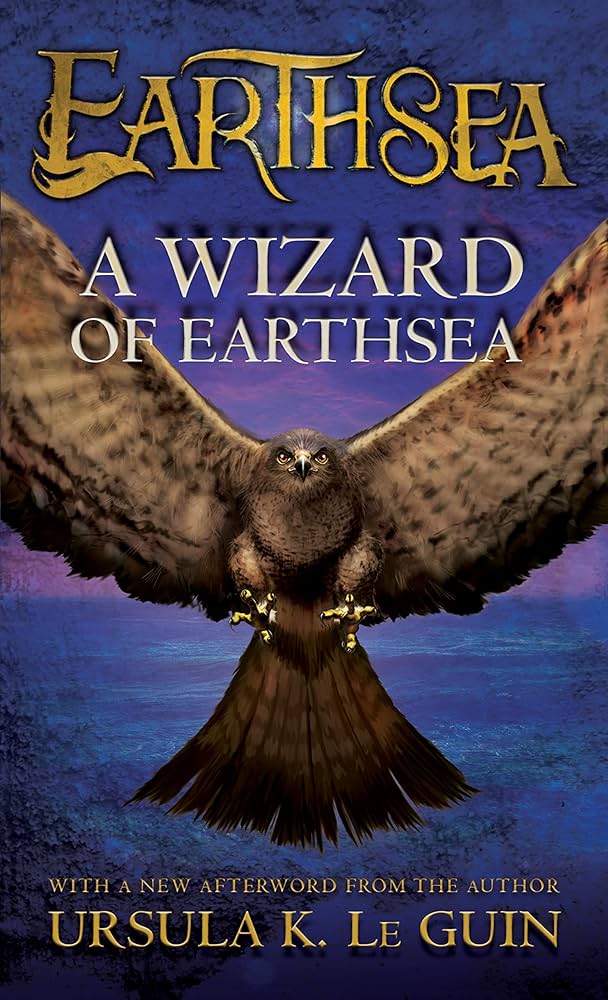The diverse 1968 fantasy novel that still resonates with this generation of readers
By SAVANNAH BURGER—arts@theaggie.org
Are you looking for a new wizard-focused fantasy book to satiate your magic desires? What if I told you there was a book on par with that of J. R.R. Tolkien and C.S. Lewis that featured a cast of ethnic diversity? This novel is the amazing “A Wizard of Earthsea,” written by the late, famous feminist author Ursula K. Le Guin. In her lifetime, she wrote 23 novels and many other volumes of short stories and poetry. Le Guin was lauded for her science fiction and fantasy work, with “A Wizard of Earthsea” being one of her most popular.
“A Wizard of Earthsea” is the first book of what is called the “Earthsea Cycle,” which consists of five other sequels. The world of the novels is set in the fictional archipelago of Earthsea, which has countless island-based, non-industrial civilizations. It follows the story of a boy named Ged and the journey he takes across the islands of the archipelago of Earthsea to eventually become history’s most wise and powerful wizard. At the beginning of his story, he’s sent to a wizarding school on the Island of Roke to unlock his magic potential. Immature, bold and brash, he accidentally unleashes an unspeakable evil unto the world and leaves the school to escape the darkness he created. During his journey, he ages, matures and faces dark sorcerers, shape-shifters, dragons and even purgatory. Eventually, he faces the monster that hunts him in a cathartic battle defined by self-acceptance.
One of the most notable elements of this book is its nearly unheard-of ethnically diverse cast of characters. Especially because the book was written in the ’60s, it is astonishing that a book in which all of the residents of Earthsea, besides those residing on one small chain of islands called the Kargad Lands, are people of color. Every newly introduced character, besides those belonging to the Kargad Lands, are depicted as shades of brown, including Ged himself, who is a reddish-brown. Even to this day, media has had a history of caucasian people dominating casts and leaving those of color to make the minority if that. Because of this, the fact that Le Guin chose to flip this dynamic on its head only four years after segregation was abolished in the United States is revolutionary. Even popular fantasy books that are modern, such as the “Harry Potter” franchise, do not reflect anything close to this kind of diverse representation.
“A Wizard of Earthsea” is a beautiful representation of closeness with the natural world and nature’s part in self-acceptance. Le Guin herself had a deep interest in Taoism, which is reflected in her novel. Magic in Earthsea has an intimate relationship with the balance of the environment. The name of the archipelago itself, Earthsea, represents the balance of nature with opposite elements, earth and sea. Everything is centered on embracing both darkness and light of the self along with cherishing that of the natural world. All magical power is based on the visceral knowledge of the true names of the organic environment and only calling upon those names when necessary, out of respect. In the book, Ged must learn not to force nature to do his bidding—although he has the power to blow a rainstorm away, he only finds with maturity that he should allow the rain to fall where it desires, as is the order of nature. He must let Earthsea live and breathe without human intervention, be it magical or not. Because of this, the whole book is an encouragement to form a symbiotic relationship with the natural world and the soul.
Despite Le Guin being a staunch feminist in her lifetime, “A Wizard of Earthsea” doesn’t do very well in means of positive representation of female characters and their magical abilities compared to that of males. Although this makes the book less inclusive, the deficit in gender equality greatly evolves throughout the book series. By the fourth book, “Tehanu,” written in 1990, women and their sorcery are depicted equally, and there is an emphasis on the magic’s beauty, which is positively linked with female sexuality.
The characters, setting, imagery and message of self-loving this novel has to offer makes “A Wizard of Earthsea” just as relevant today as it was in 1968. Le Guin’s writing is masterful, and it is easy to get swept away with Ged in the whimsical world that is Earthsea.
Written by: Savannah Burger—arts@theaggie.org





